
Source: ruinemans.com
The Rosy Barb (Puntius conchonus) is a favorite among the beginning freshwater fish keeper. They are a beautiful, hardy fish that are very active and fun to watch.
The Rosy Barb gets its name because of its shimmery red coloring, which intensifies during their spawning season.
The Rosy Barb’s native habitat is in the waters of India, Banal and Assam, but they’ve also been found in the waters of Singapore, Australia, Mexico and Puerto Rico. They vary in size depending on where you find them, but typically these fish top out at about 4 inches.
Table of Contents
Tank Considerations
The Rosy Barb is one of the easiest freshwater tropical fish to keep, which is why they make for a great starter fish. These fish normally grow to be 4 inches, but some can reach 6, which means you’re going to need to have a decent sized tank — 20 gallons is the minimum, but 30 will give a school of these a little more breathing room.
The Rosy Barb likes water on the cooler side than most tropical fish with temperatures ranging between 64-72˚ Fahrenheit. They will do well in water with a pH range of 6.5-7.0 and a hardness of 2-10 dGH.
Also, these fish like to jump so be sure to have a secure lid.
Like most varieties of barb fish, the Rosy Barb is an active swimmer and needs plenty of room to move around, so be sure to plan for enough open swimming areas when you’re planning your tank’s decor. In the wild, they inhabit rives and streams with sandy bottoms and dense plant life, so replicating these conditions will make them comfortable in the home tank.
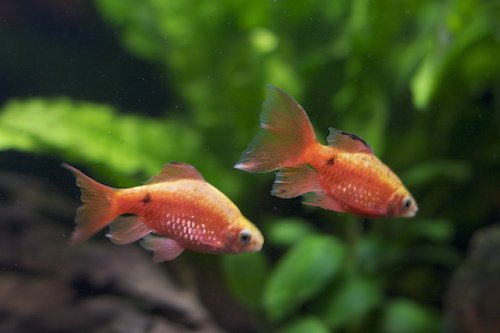
Source: wikimedia.org | Kkonstan
These fish are very easy to care for, but you’re still going to want to maintain good water quality to keep them healthy. Plan on changing 25-30% water once a month or if your tank is on the crowded side, then plan on more frequent changes of 20-25% every other week.
The Rosy Barb makes a good fish for a community tank. They’re mostly peaceful, although they can be occasional fin nippers. As mentioned, they are a schooling fish and prefer to be in groups of 4-6.
Lastly, be sure to use a good filter to keep the water clean and produce a bit of a current, which will help the males keep their rich coloring.
Health & Care
Most barb fish are very hardy, however they’re not totally immune to diseases, and the Rosy Barb is no exception. While disease isn’t generally a problem with these fish, you will have to maintain good water quality and provide them with a nutritious diet if you want to maintain their good health. In addition, it’s a good idea to quarantine everything you plan on putting in your tank to ensure no harmful bacteria or other things gets in your tank and wreaks havoc.
Of the diseases that affect tropical fish, Ich is perhaps the most common. This manifests itself in tiny white spots that cover the fish’s body. Other symptoms include difficulty breathing and clamped fins. The good news is that if your Rosy Barb does contract this disease, the outbreak can be limited to one or two fish if you catch it early enough and begin treatment.
The best cure for any disease, though, is to ensure it doesn’t happen in the first place. Fortunately, preventing disease in the home tank is easy. Make sure your water quality is always good, give your fish a well-balanced and nutritious diet, and keep your fish stress free. Stressed fish are far more susceptible to disease than fish that are comfortable in their environment.
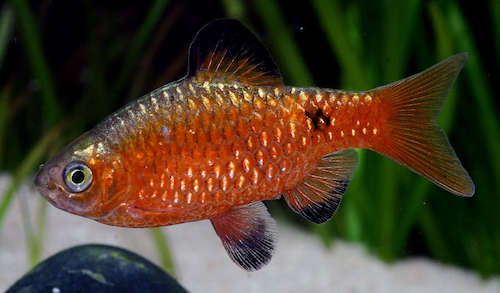
Source: aquariumdomain.com
Diet
Like most barb fish, the Rosy Barb is an omnivore. They prefer a mixed diet of plant and animal matter in the wild. In the home tank, they will be happy with a high quality flake food as the bulk of their diet, and meaty foods like brine shrimp (live or frozen) or worms as a treat now and then. You can also supplement their diet with foods designed to enhance their colors, which you can find at any reputable pet retailer. Feed them 3 times a day and no more than they can consume in 3 minutes or less at each feeding.
Breeding
Young Rosy Barb fish are difficult to identify sex when they’re juveniles, but the male’s color becomes redder and his body more compact and slim as he enters adulthood. The females are generally smaller than the males.
These fish are very easy to breed. They are egg layers and prefer to scatter their eggs as opposed to depositing them at a single location. As with most tropical fish, it’s wise to use a breeding tank for a breeding pair that’s separate from your community tank. Keep the water temperature in this tank between 73-77˚ Fahrenheit and use a divider so the eggs can fall through to the substrate. Once they spawn, remove the adults from the tank lest they eat the eggs.
The eggs generally hatch in about 30 hours and you can feed the fry infusoria or any good liquid fry food. Make sure to remove any waste as quickly as possible because the fry are very sensitive to water conditions and must have clean water to survive.
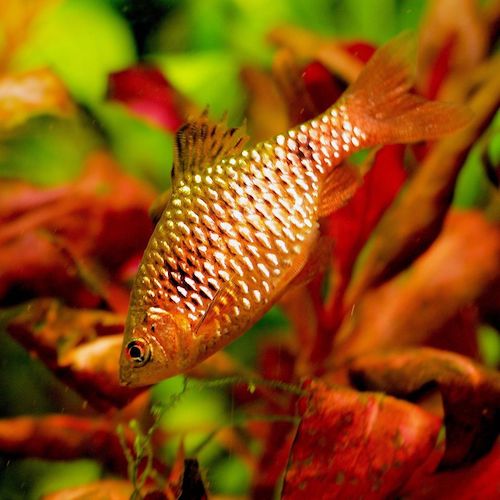
Source: flickr.com | Dornenwolf
Summary
- Fish Size: 4 inches
- Tank Size: 20 gallons minimum
- Diet: Omnivore
- Water Temperature: 64˚ – 73˚ Fahrenheit
- Water pH: 6.5-7.0
- Water Hardness: 2-10 dGH
- Breeding: Easy
The Rosy Barb is a popular starter fish for the beginning tropical fish enthusiast. They’re readily available in most pet stores and very easy to care for. They provide great entertainment with their constant swimming and look impressive in a school as they dart back and forth. Feed them good and maintain good water quality and these fish should provide you with years of enjoyment.
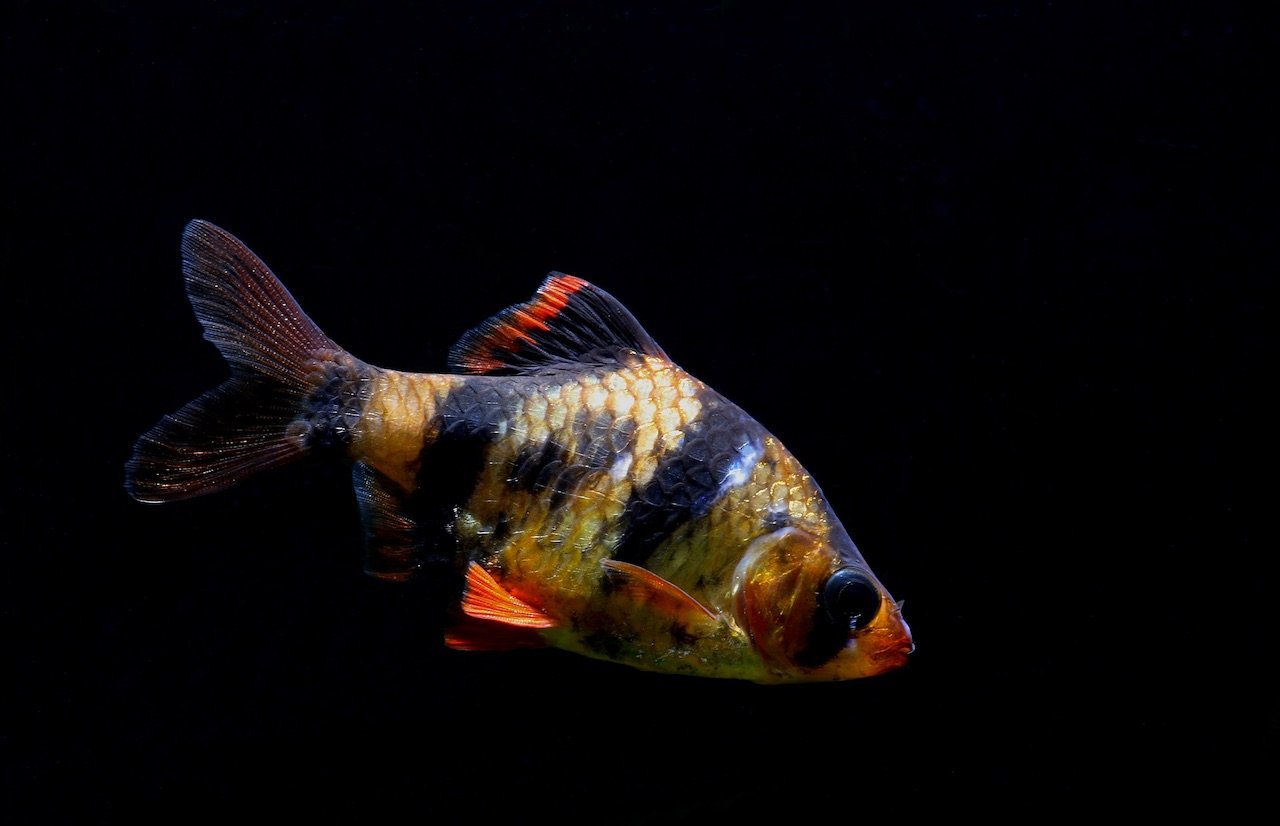

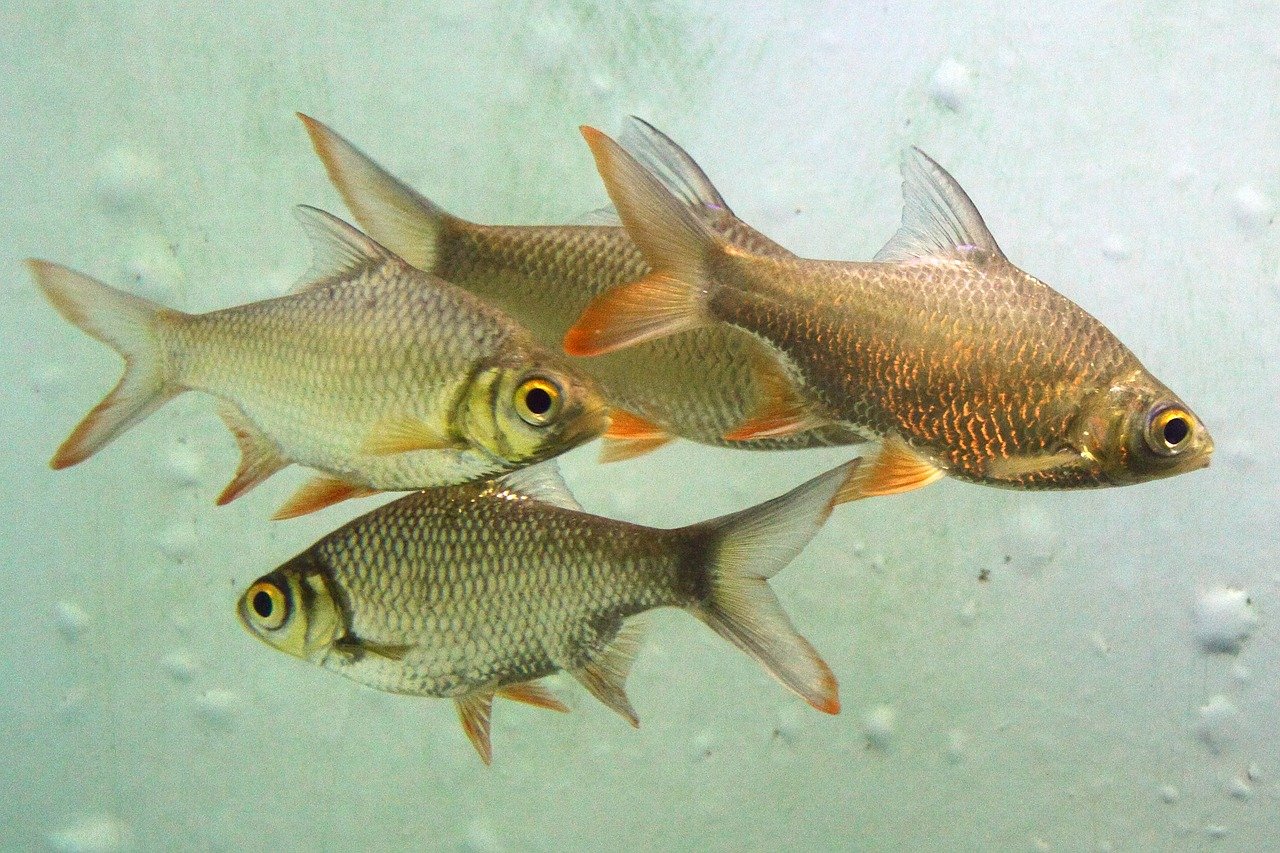


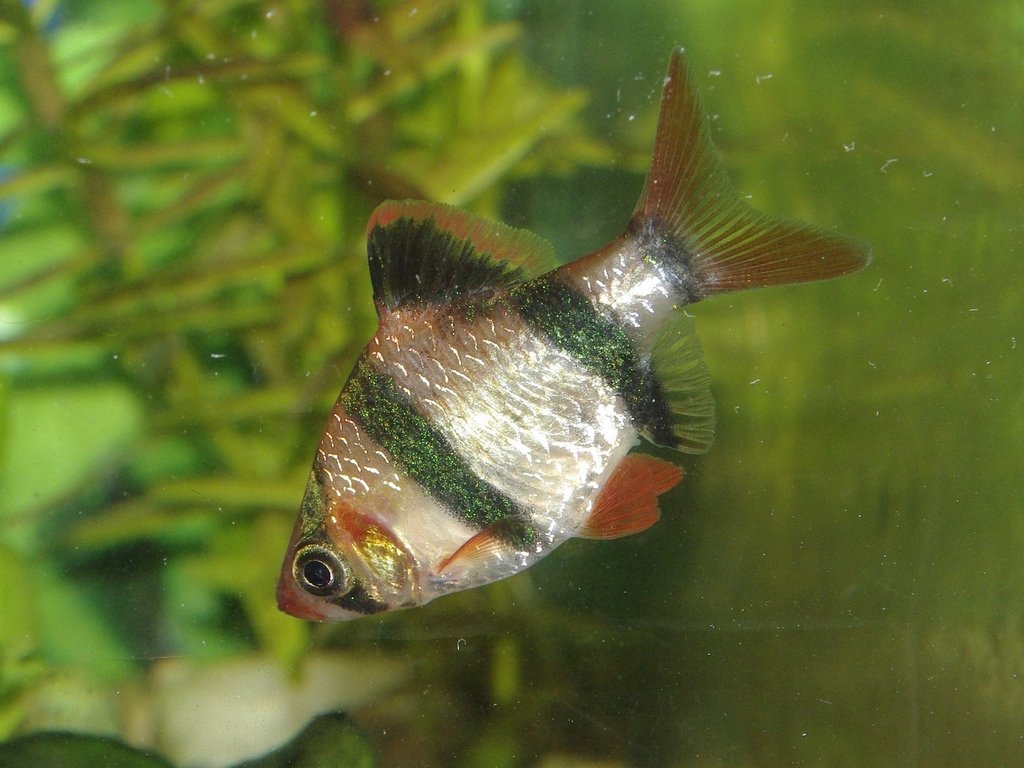
Leave a Reply